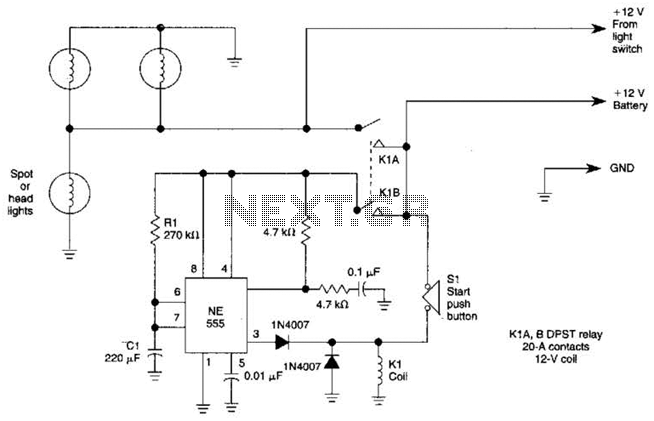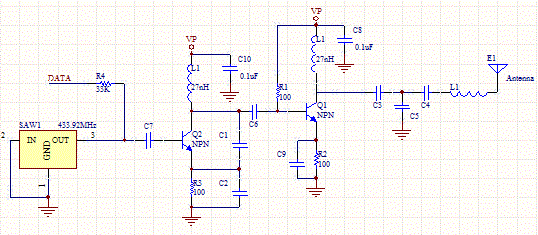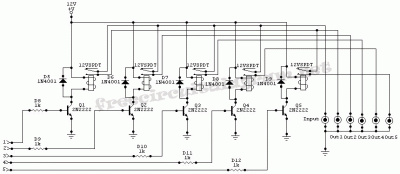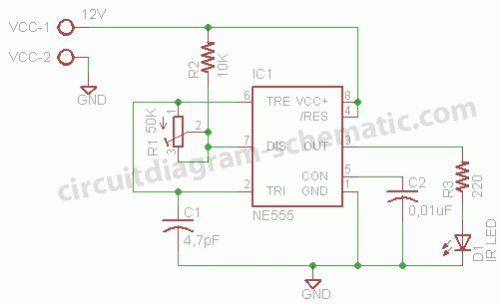
AC adapter circuit
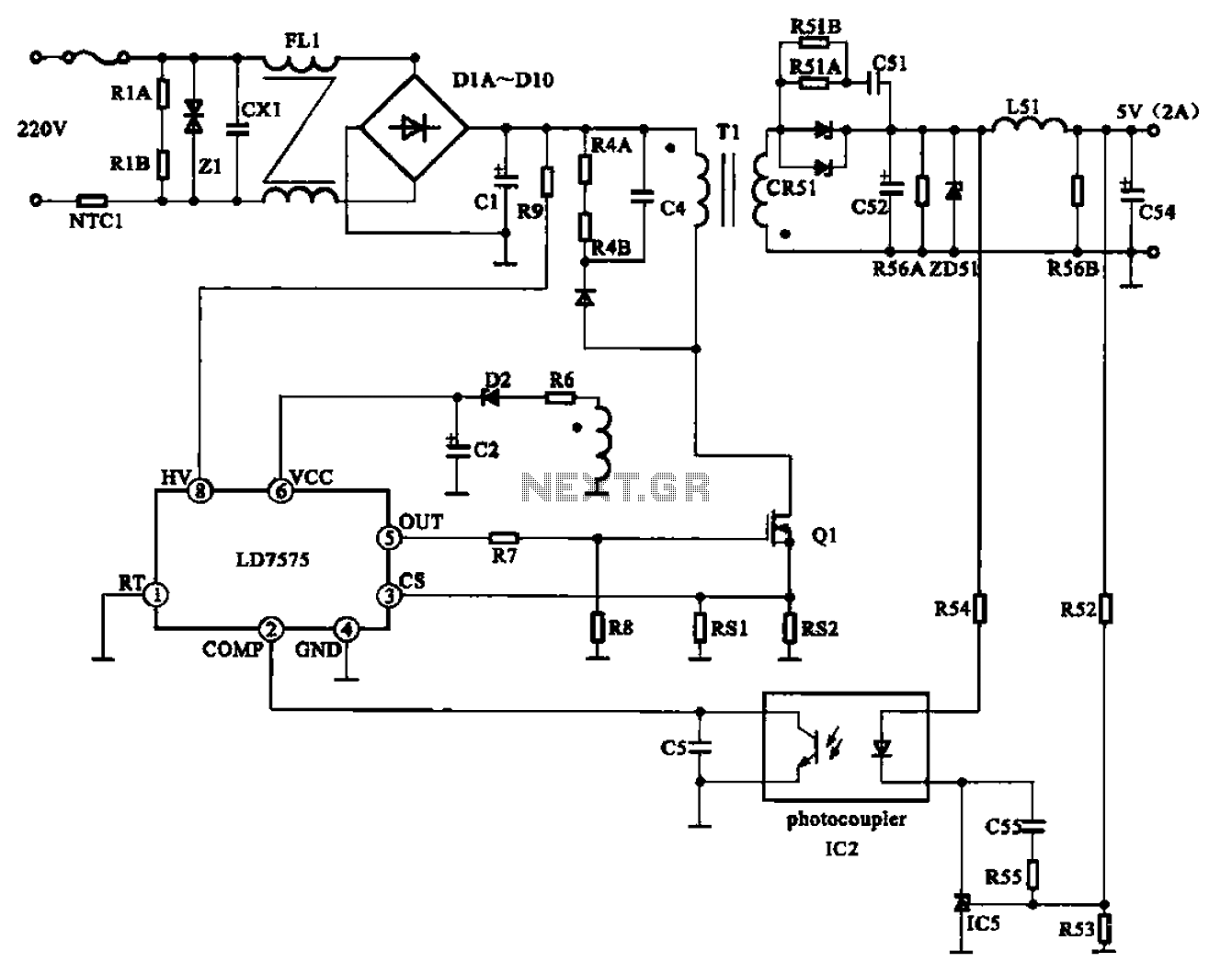
The AC adapter circuit is designed for portable digital products, converting low voltage DC into 220V AC. It features a circuit configuration for a switch power drill utilizing the oscillation IC LD7575 as a switch. This IC operates after being activated by a vibration switch, generating a PWM pulse output that drives switch Q1. Once Q1 is engaged, it allows the switching pulse current to flow through the primary winding of transformer T1. The secondary output of T1 is then rectified and filtered to produce a positive voltage output (+V).
The AC adapter circuit serves as a crucial component for powering portable digital devices that require a 220V AC input. The use of the LD7575 integrated circuit is significant due to its ability to manage power efficiently. The circuit begins with a low voltage DC source, which is fed into the LD7575. This IC is designed to operate in a pulse width modulation (PWM) mode, allowing it to control the output voltage by varying the duty cycle of the pulses it generates.
The PWM output from the LD7575 is connected to a transistor switch, Q1, which acts as a gate for the current flowing into the primary winding of transformer T1. The operation of Q1 is critical, as it effectively modulates the power delivered to the transformer, enabling the conversion of the low voltage DC into high voltage AC. Transformer T1 steps up the voltage to the desired level, and its secondary winding generates an alternating current output.
After the AC voltage is produced, it must be rectified to provide a usable DC output. This is typically achieved using a rectifier circuit, which may consist of diodes arranged in a bridge configuration. The rectified output is then filtered using capacitors to smooth out any ripples, resulting in a stable positive voltage output (+V) suitable for powering the connected load.
Overall, this AC adapter circuit exemplifies an efficient design for converting low voltage DC into high voltage AC, utilizing modern components to ensure reliability and performance in portable applications.AC adapter circuit It shows portable digital products AC adapter circuit, the low voltage DC into AC 220V voltage. The circuit configuration of switch power drill with oscillat ion IC LD7575 is a switch, which plays after the vibration switch by the PWM pulse output focus, drive to move the switch Ql, Ql work after switching pulse current transformer primary winding Tl. Tl secondary output rectifier filter well after +V output voltage,
The AC adapter circuit serves as a crucial component for powering portable digital devices that require a 220V AC input. The use of the LD7575 integrated circuit is significant due to its ability to manage power efficiently. The circuit begins with a low voltage DC source, which is fed into the LD7575. This IC is designed to operate in a pulse width modulation (PWM) mode, allowing it to control the output voltage by varying the duty cycle of the pulses it generates.
The PWM output from the LD7575 is connected to a transistor switch, Q1, which acts as a gate for the current flowing into the primary winding of transformer T1. The operation of Q1 is critical, as it effectively modulates the power delivered to the transformer, enabling the conversion of the low voltage DC into high voltage AC. Transformer T1 steps up the voltage to the desired level, and its secondary winding generates an alternating current output.
After the AC voltage is produced, it must be rectified to provide a usable DC output. This is typically achieved using a rectifier circuit, which may consist of diodes arranged in a bridge configuration. The rectified output is then filtered using capacitors to smooth out any ripples, resulting in a stable positive voltage output (+V) suitable for powering the connected load.
Overall, this AC adapter circuit exemplifies an efficient design for converting low voltage DC into high voltage AC, utilizing modern components to ensure reliability and performance in portable applications.AC adapter circuit It shows portable digital products AC adapter circuit, the low voltage DC into AC 220V voltage. The circuit configuration of switch power drill with oscillat ion IC LD7575 is a switch, which plays after the vibration switch by the PWM pulse output focus, drive to move the switch Ql, Ql work after switching pulse current transformer primary winding Tl. Tl secondary output rectifier filter well after +V output voltage,
